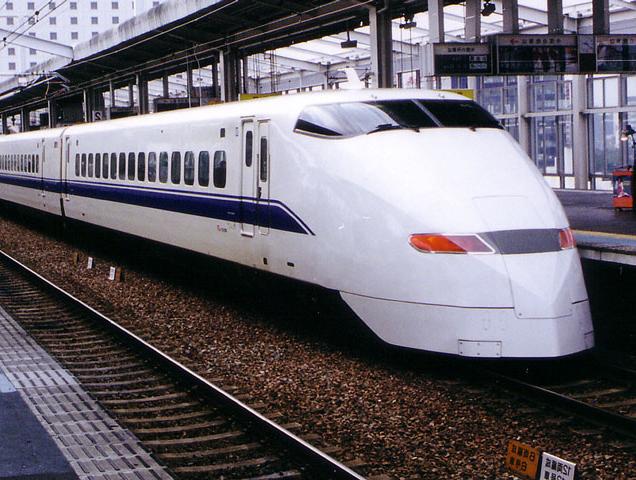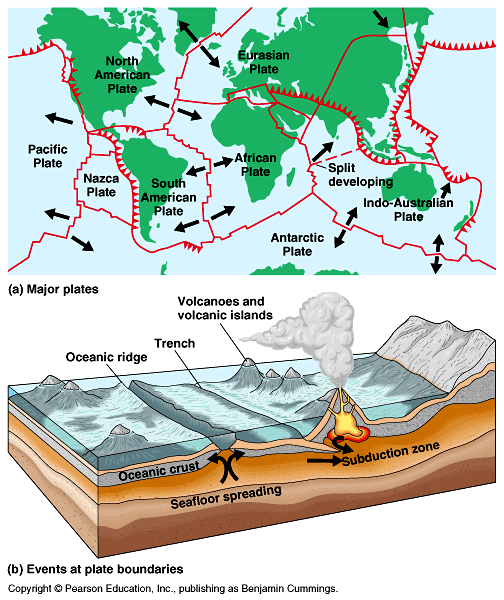|
Evolution of the Surface Features of the
Terrestrial Planets |
Today, the appearances of the Terrestrial planets are grossly
different. Here, we will again look at the Earth and the Moon in detail but,
this time, we will also look at Mercury, Venus, and Mars as well.
The Terrestrial planets are divided into two groups: (1) Venus and Earth; and
(2) Mercury and the moons. Mars is intermediate between the groups. The
division is based on the amount of ongoing evolution
of the surface features of the planets
(which is determined by the size of the planet).
Recall that the larger planets are hot which leads to significant
heat flow from their centers to their surfaces. The heat flow drives
geology (in particular, tectonic activity) which has a significant
effect on the evolution of the surfaces of the planets. For example,
the geologically dead Moon has surface features as
old as 4.1 billion years
and most features are older than 3 billion years while the geologically
active Earth has a few rocks almost 4 billion years old (and perhaps as old
as 4.4 billion years) on the
continental plates with oceanic plates which are less than a few hundred
million years old.
THE MOON
A neat animation shows the
rotating Moon put together using
Clementine
images. Also, see some pictures of the
Moon,
Mercury, and
Mars which
exhibit the various features in which we are interested.

|
The Moon is divided into two types of
terrain:
-
maria, the lightly cratered,
dark-colored lowland
basins which cover 15 % of the lunar surface.
The maria are
large basins (old impact craters) which have
been filled in by
large lava flows. Their surfaces are dark and smooth with little
evidence of cratering.
- highlands,
the light-colored, heavily cratered
regions which cover 85 % of the lunar surface.
Because of their heavy cratering, the highland regions are inferred to
be ancient while the lightly-cratered maria
are inferred to be young (younger).
The the lunar mountains
in the highland regios are produced by the large impacts
uplifting the terrain.
They are not formed as
are mountains on Earth, that is, they are not formed
through the collisions of lithospheric plates.
Similar types of features are seen on Mars and Mercury.
|
Crater Origin: The craters on the Moon and
on most other Terrestrial planets (see
Mercury)
were produced by impacts and not by volcanism.
The backside of the Moon is very similar to the near
side of the Moon in terms of cratering,

There is, however, a lack of
maria on the far side of the Moon.
(Perhaps due to the asymmetry in the crutal thickness of the Moon.)
LUNAR CHRONOLOGY
The chronology for the Moon is very good because we have
been there, seen it. This has allowed
the gathering of rock samples from various terrains on the Moon.
The importance of this is that the rocks
could be age-dated using the technique
of radioactive age dating which
allowed us to set a firm
chronology for the evolution of the lunar surface
features. This is important not only for the
Moon but also for the inner
Solar System in general as, presumably, the chronology of
the Moon roughly follows the
timeline as the rest of the inner Solar System (that is, it tells
what the cratering rate was for all of the inner Solar System bodies.)
Radiometric Age Dating
Radioactive elements provide accurate clocks. If one can measure the
relative abundances of the radioactive element (parent)
and the decay product (daugher), one can
infer the age of the rock through the half-life of the material. The
half-life of an element is the time it takes for one-half of the parent nuclei
to decay (transmute) to the daughter nuclei. See the plot to the right. |
 |
 |
Some further useful elements (for the Moon and Earth) are:
- Potassium-40 -----> Argon-40 with half-life of 1.3 b. years
- Rubidium-87 -----> Strontium-87 with half-life of 47 b. years
In practice, a number of parent-daughter pairs are used to date a rock.
The result is usually accurate within about 1 to 5%.
This age is usually thought of as solidification age after which rock has
stayed undisturbed.
|
Using radioactive age dating, Moon rocks were found to be:
- Mare Basalt: - 3.1 to 3.8 billion years old
- Highland Breccia: - 3.8 to 4.0 billion years old
- Highland Anorthosite - proved difficult for absolute dating; but are
estimated to be 4.4 billion years or older.
Here, we present the
chronology of the Moon's evolution and the
cratering rate for the inner
Solar System over the last 4 billion or so years. Not shown is that
largest impact suffered in the Moon-Earth history, however, that is the
origin of the Moon itself;
 |
ORIGIN OF THE MOON |
TECTONIC ACTIVITY
The most massive Terrestrial planets, Earth and Venus,
are likely to show
active geologies.
Mars may show geological activity.
Mercury and
the Moon are probably dead from a geological standpoint. The sorts of
geology we
expect are volcanism and tectonic activity, both
manifestations of the
fact that the interiors of the planets are hot.
A consequnce of
geological activity (and wind and water erosion on the
Earth)
is to produce a relatively young surface. (By young, we mean
that the surface features
were formed recently.) The surface of
Venus is around 300 - 800 million years old, while the majority of the Earth's
surface features are much younger. For example,
- Ocean basins are < couple hundred million years old
-
Hawaiian Islands, island chain,
~ millions of years old
- Grand Canyon (cut by the Colorado River) < 10 million years old
- Himalayas,
Andes mountain ranges < tens of millions of years old
These ages are to be compared to the ages of the planets and Solar System
of 4.6 billion years.
Tectonic Activity on the Terrestrial Planets?
















